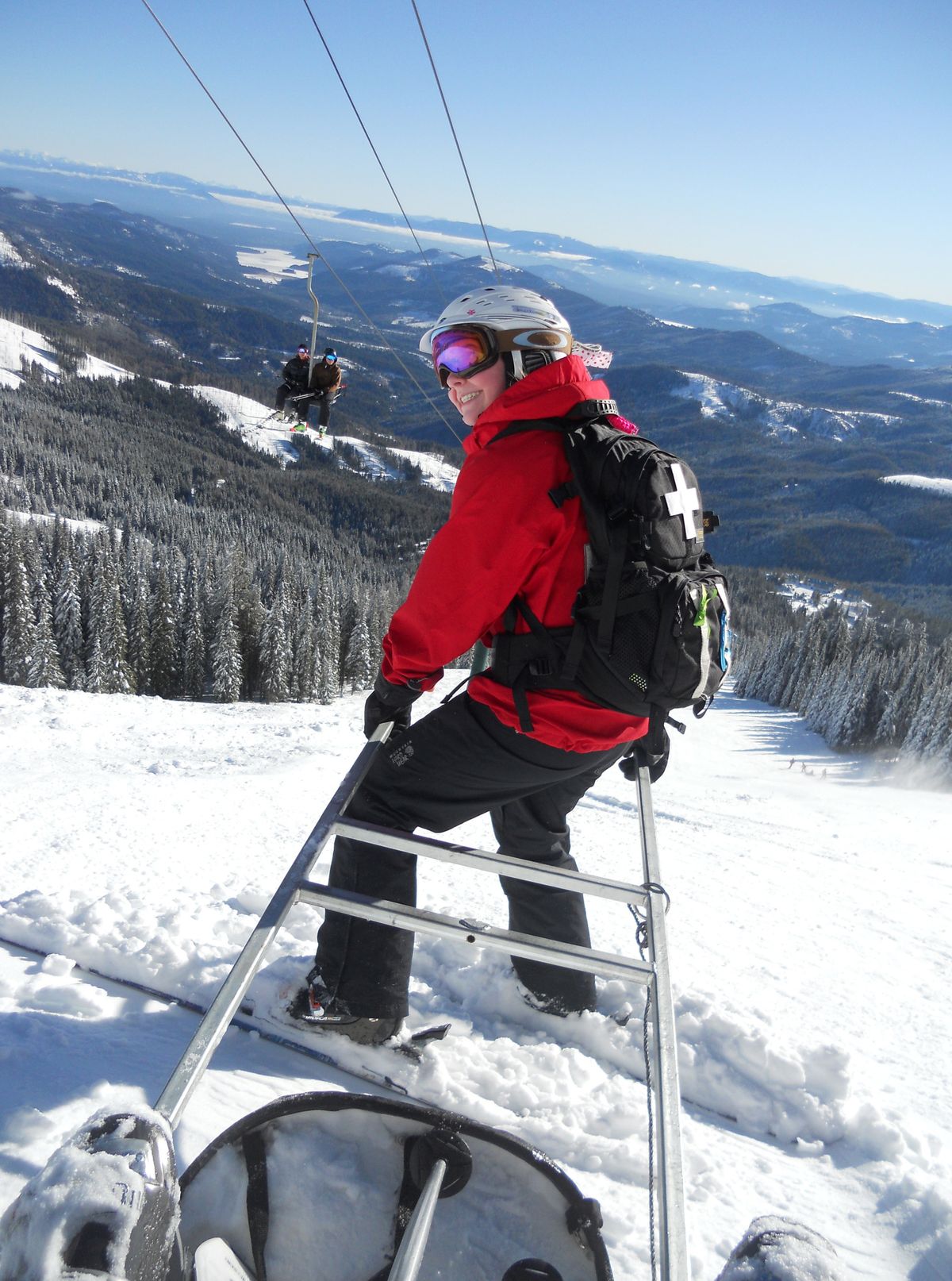Ski patrol candidates make steep commitments

Tom Torvik relished the treatment he received for injuries on the ski slopes this winter.
“I had broken bones in all locations, abdominal bleeding, concussions – the list goes on and on,” he said, describing his role as a victim for training the most recent class of Mt. Spokane Ski Patrol candidates.
Torvik joined other volunteers for the sometimes uncomfortable emergency scenarios in the December on-slope training.
Then, during the January exam, a dozen men and women ranging from age 15 to 60 had to prove they could apply the skills learned from daunting training requirements scattered over five months.
“I have a new appreciation for what ski patrollers learn and do,” he said, noting that he was surprised at how many real requests for assistance he heard on the radios of the certified patrollers as they administered the test.
“The candidates included a real cross section – a high school teacher, a nurse, a customer service specialist for Qwest – and I was impressed at how the training has the effect of a boot camp, giving them the skills while developing a sense of family and an appreciation for service to the community.”
The Mt. Spokane Ski Patrol is a volunteer group of about 130 active members.
“They get a free season ski pass, but they pay their dues,” said Torvik, who enlisted for his intimate look at the organization because his father, 60, was among the candidates.
“You don’t have to be a perfect skier to be involved with ski patrol,” said Bill Hofer, candidate training director. “If your skiing ability isn’t up to par, you can help by being in the auxiliary or becoming what we call toboggan-free patrollers.”
Each year, the new group of candidates plunges into about 60 hours of instruction and skill training from early April through June.
“The time commitment is the biggest revelation,” Hofer said. “The candidates who are going to drop out usually decide in the first two weeks.
“The training is a progression that builds skills from one session to the next and a lot of repetition,” Hofer said. “They take a summer break before coming back for on-hill training that begins in September and runs through December.”
Torvik volunteered as a victim every weekend in December. “I could see the candidates grow into the job,” he said.
He recalls in particular the progression of Lexi Voss, 15, the youngest patrol candidate.
“I saw her go from being shy to kicking ass and doing what needed to be done,” he said.
In the final exam, Torvik posed as a head-injury victim, hurt in the trees on a steep slope and mired in snow with his head downhill.
“I’m 240 pounds with all my gear on, and they had to take vitals, assess me, get me stabilized on a toboggan, collar on, and make decision to call for helicopter,” he said.
“Lexi was the first candidate on the scene, so her job was to direct the show as other patrollors came in. She just rocked it.”
Age 15 is the minimum for ski patrol training, and youths must help with classes and patrol activities before they can become a candidate.
“We ask these kids to grow up faster than the average kid,” Hofer said.
“Lexi Voss had a great team with her that didn’t let her slide. They put her to the test and she blossomed. She knows her stuff. She’s rated in the top three of her class.”
Voss said she’s interested in every facet of the ski patrol, including the required volunteer time at the annual Ski Swap.
“She’s at the age where she’s exploring possible career choices,” said her father, Kevin Voss. “She really took to this training, and it definitely has opened her eyes to the possibility of a medical-related career.”
“The biggest challenge for me was having to take charge, which is what you have to do when you’re the first patroller on the scene of an accident,” she said. “Bossing adults around is hard for me – but I got used to it. It’s a matter of building confidence in what you’ve learned.”
She said handling the rescue toboggans also can be enjoyable: “They’re really heavy, but once you know how to use your skis instead of trying to muscle them down the hill, it’s a lot easier.”
She’s getting used to having her skills scrutinized. “I take my driver’s education test this week,” she said.
All of the candidates who passed the test must finish this season teaming with a mentor on each patrol.
Voss will have to patrol with a mentor until she’s 18 before she can take charge of a situation involving a ski resort guest.
But Torvik said it was obvious she couldn’t wait to put on her red Ski Patrol jacket at the little on-slope ceremony the patrollers have for candidates that pass the test.
“The experience of watching this class and the professionalism of the MSSP has inspired me to join the next candidate class,” Torvik said.